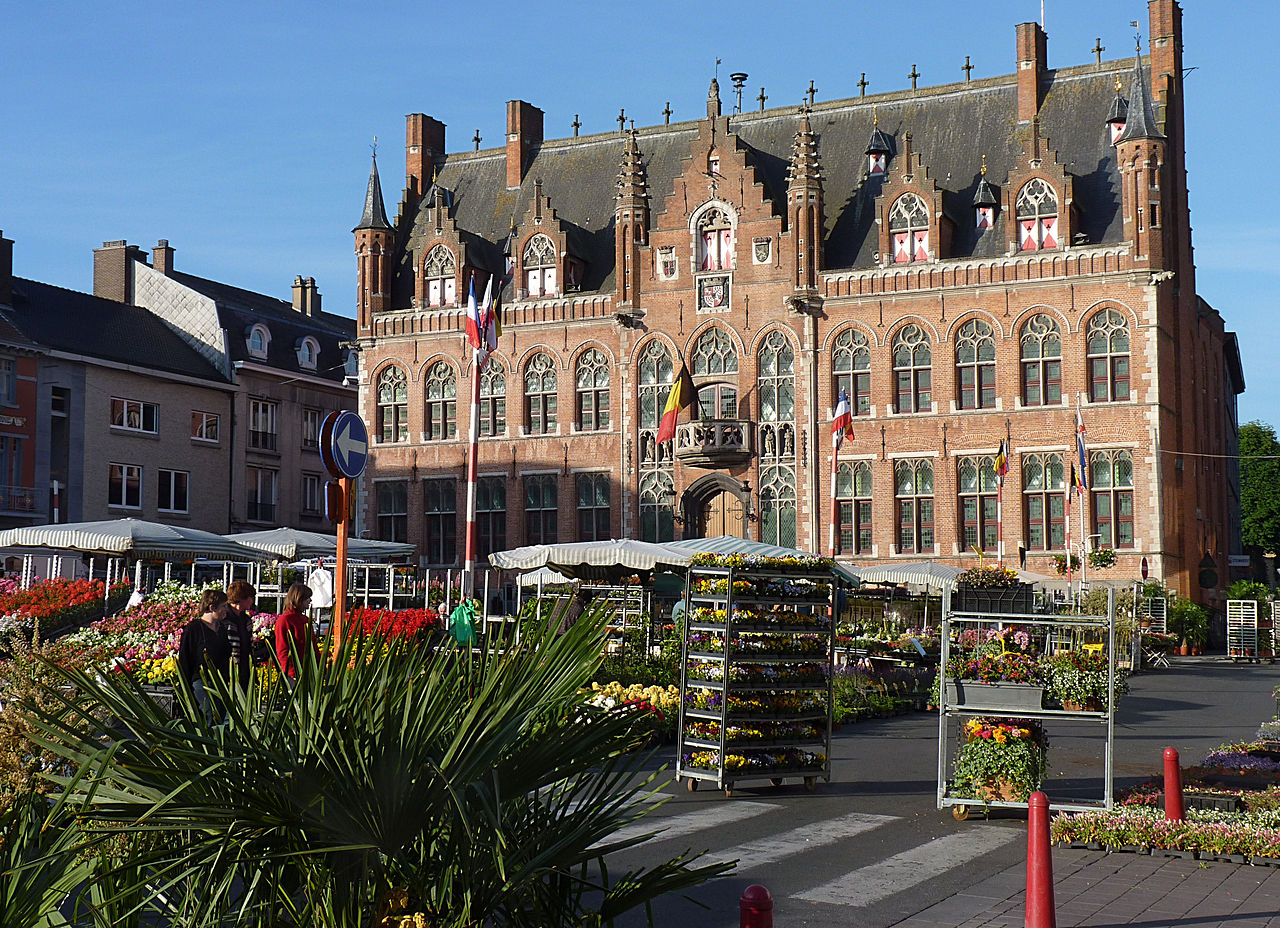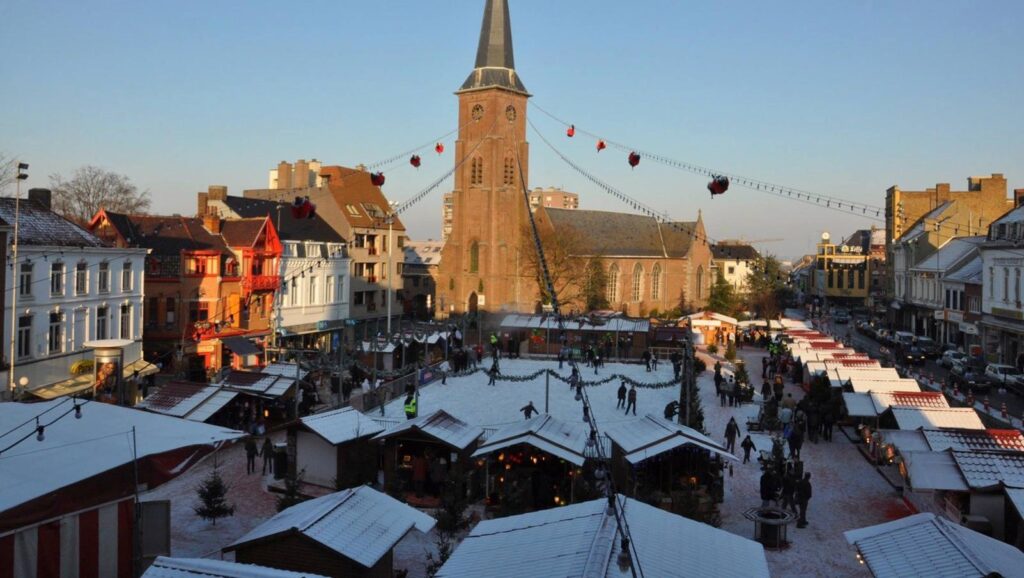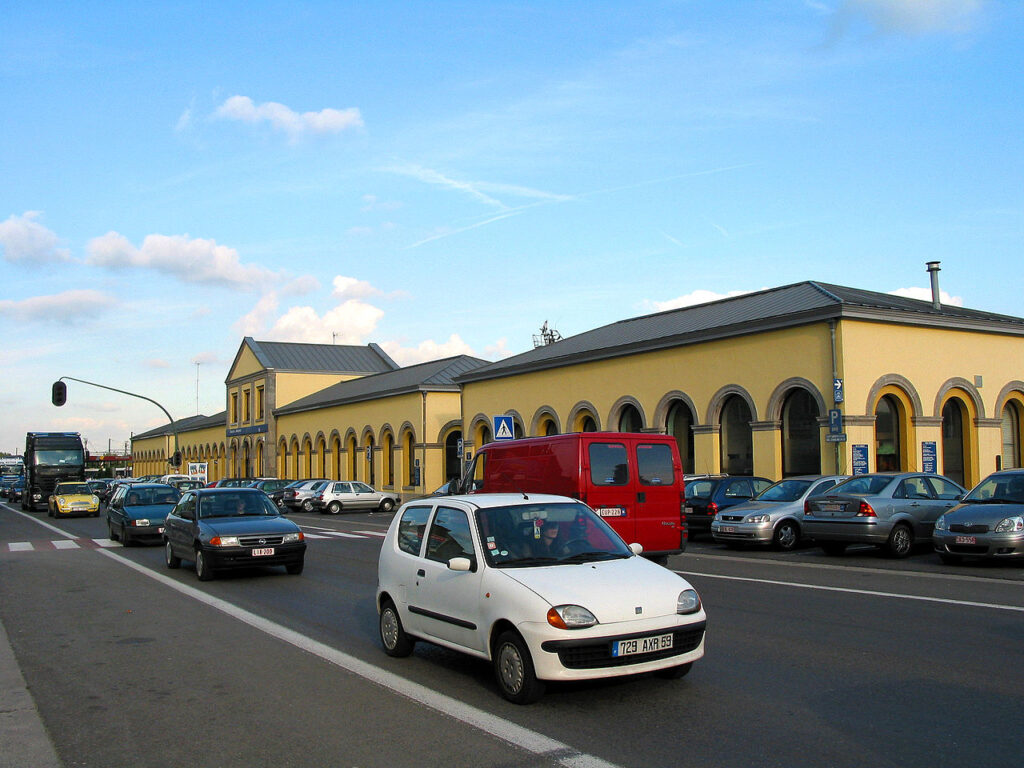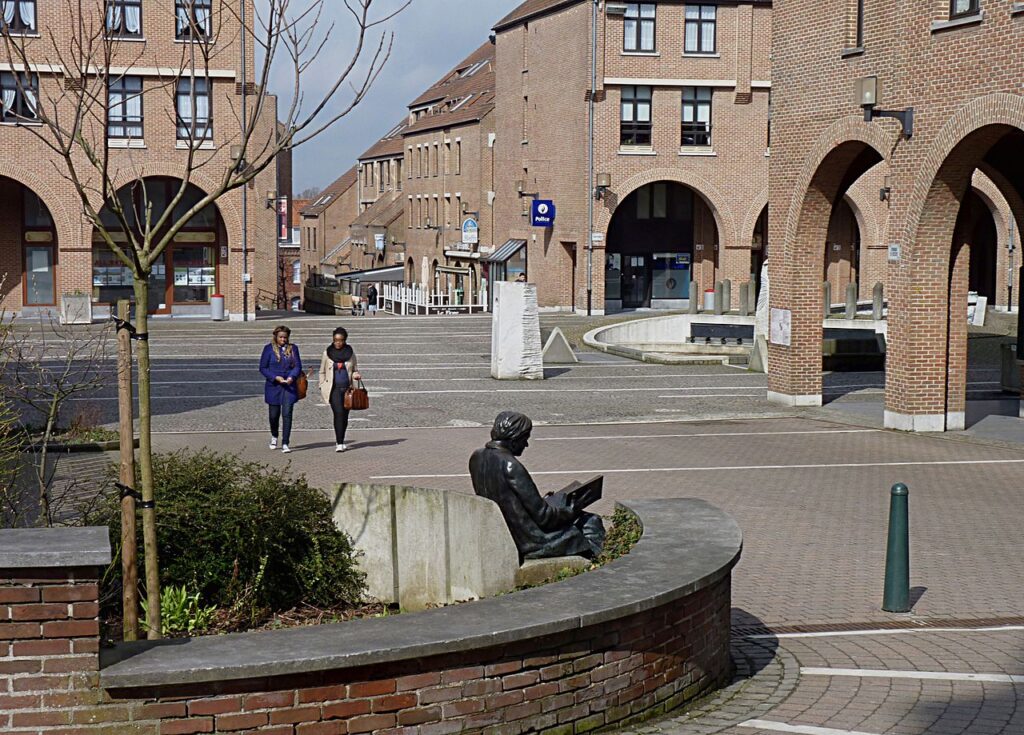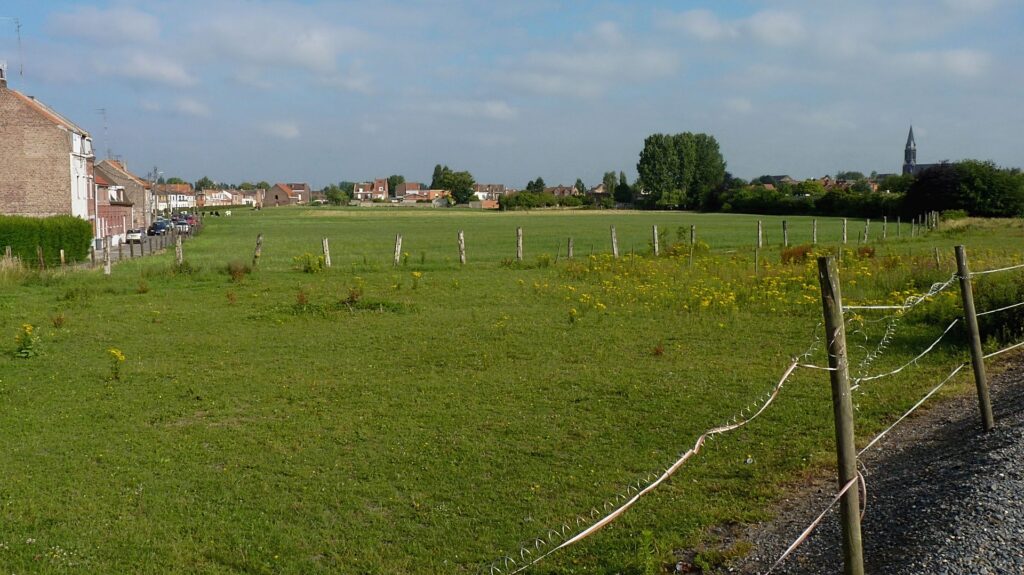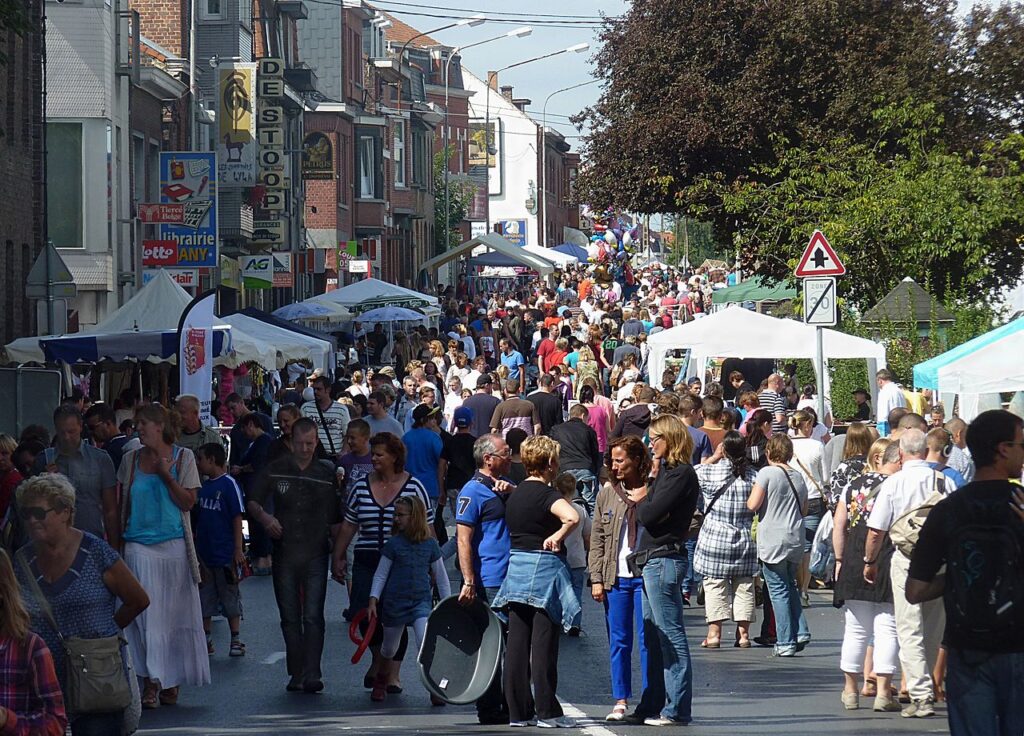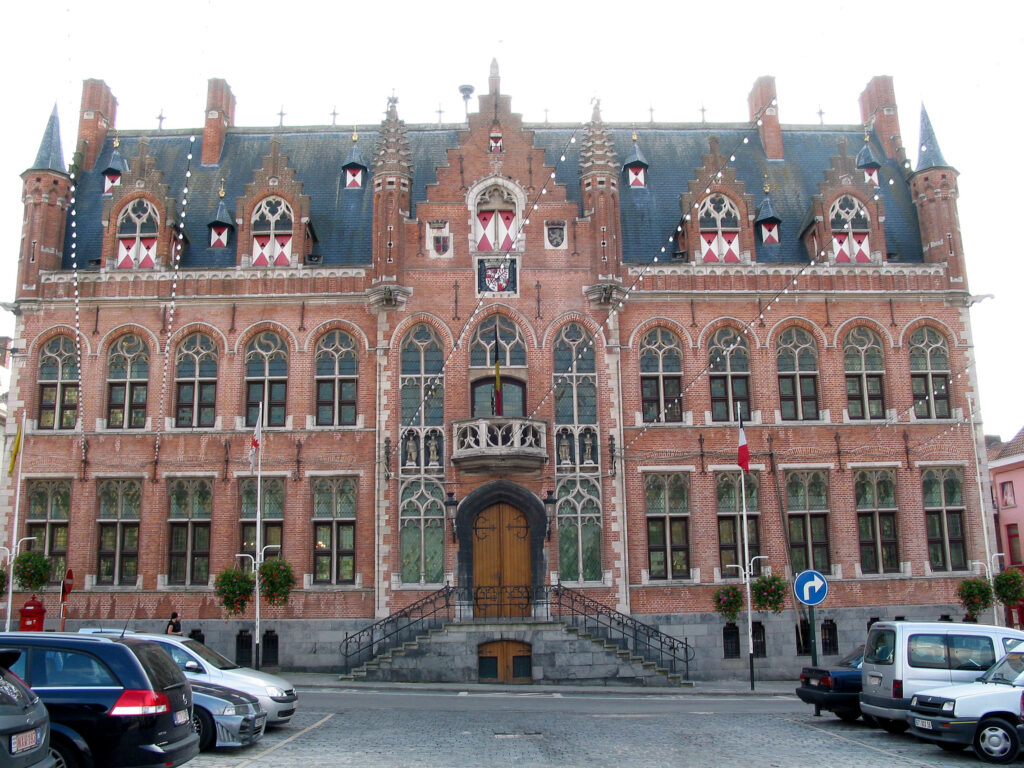Mouscron is a Walloon city and French speaking municipality with facilities for the Dutchspeaking minority, located in the Belgian province of Hainaut, along the border with the French city of Tourcoing, which is part of the Lille metropolitan area. The symbol of the city is the Hurlu: a character representing Protestant activists, who plundered the countryside during the Wars of Religion (16th century).
Sights
- The town hall and the main square (Grand Place). The town hall was opened in 1890. It was designed by the architect René Aimé Buyck from Bruges and the style may be defined as neo gothic from maritime Flanders. The building is outstanding because of the harmony of its proportions and the fineness of its sculptures.
- The Saint-Barthélémy church
- The medieval castle known as the Château des Comtes can still be visited. The oldest extant parts date from the 15th century. Four families of lords lived in it during six centuries. From this big domain remains its courtyard marked by annexes from 16th to 17th centuries and moats.
- Mouscron’s public park dates back to the 1930s. With its ponds and manicured green areas, it has grown into one of the most beautiful parks of the country. It is home to all the plant varieties that can be grown in the local climate and it extends over an area of 7 hectares. It was inaugurated in 1932 by Fernand Cocq.
- The house of Picardy (Maison Picarde). The building was built around 1922. The inside is worth visiting. The painted earthenware that adorns the main hall of the second story were classified as historical artifacts. They depict bucolic scenes which praise the values of socialism, work, empowerment, knowledge and family. They were made by the studio of Jules Biesbroek.
- The Urban Renewal (La Rénovation urbaine). At the beginning of 1980’s, a big revitalization project was decided. The old Green Square was transformed and renamed Emmanuel de Neckere Square. The paving is worth looking at in more detail as it depicts the city’s motto: “Loyal to the King, up to carrying the beggar’s pouch” (French: “Fidèle au roy, jusqu’à porter la besace”). At the center of this modern atrium, you can see the fountain made by Bernard Verhaeghe, a local artist, in 1987.
- The olympic-size swimming pool (Les dauphins);
- The cultural center (Marius Staquet); has 3 main facilities: the Raymond Devos theater, the André Demeyère auditorium and the Jacques Brel exhibition hall
- The exhibition hall (Centr’expo); hosts exhibitions, fairs and events
- The Art Gallery; set up in the old swimming pool
- The stadium (Cannonier); can hold 10,830 spectators
- The public library
- The El bar café; hosts concerts
- Studio RQC (Radio qui chifel); the independent radio station of the city
Festivities
- The Hurlus Festival (Fête des Hurlus): The Hurlus Festival happens every first weekend of October. On Friday evening, children from across the city gather on the main square for the lantern procession. Children are accompanied by fanfare, musicians and other traditional groups. They walk around the city and sing the main couplet of the traditional song.
- The Hand Festival (French: Fête de la Main) in Dottignies. Every third week-end of September, a company of Gilles roams the streets of the village and distributes the traditional oranges to passers-by. The festival takes its name from the copper hand, possibly a symbol of fraternity, which tops the steeple of the church of Dottignies.
- A Christmas Market takes place every year on the main square.
- The vingt-quatre heure de Mouscron takes place every September. The ultimate goal of the event is to raise money for charity. The event includes groups of sportsmen running around the city for 24 hours.
